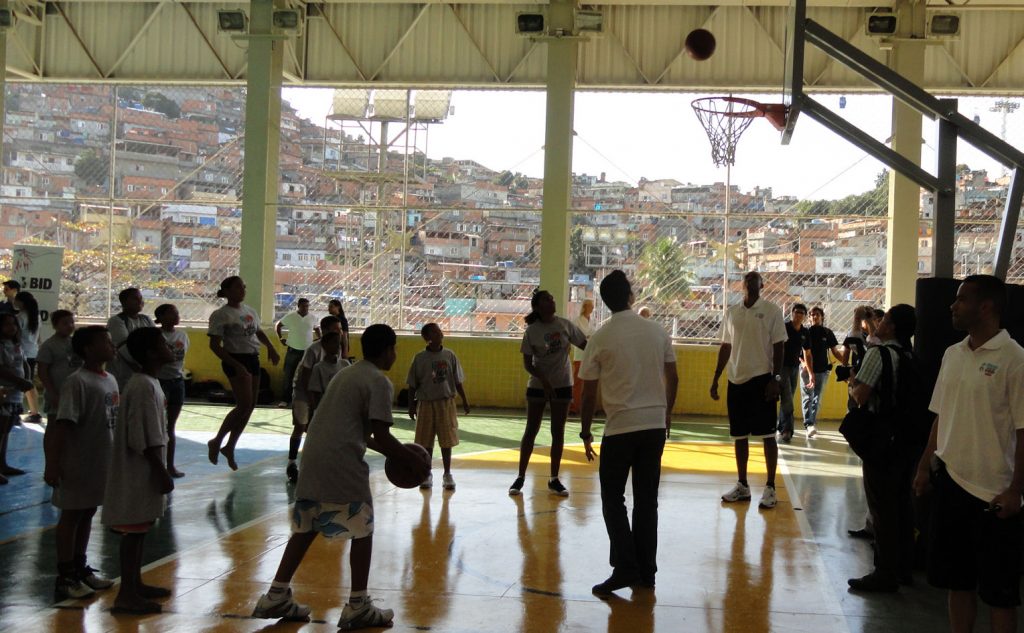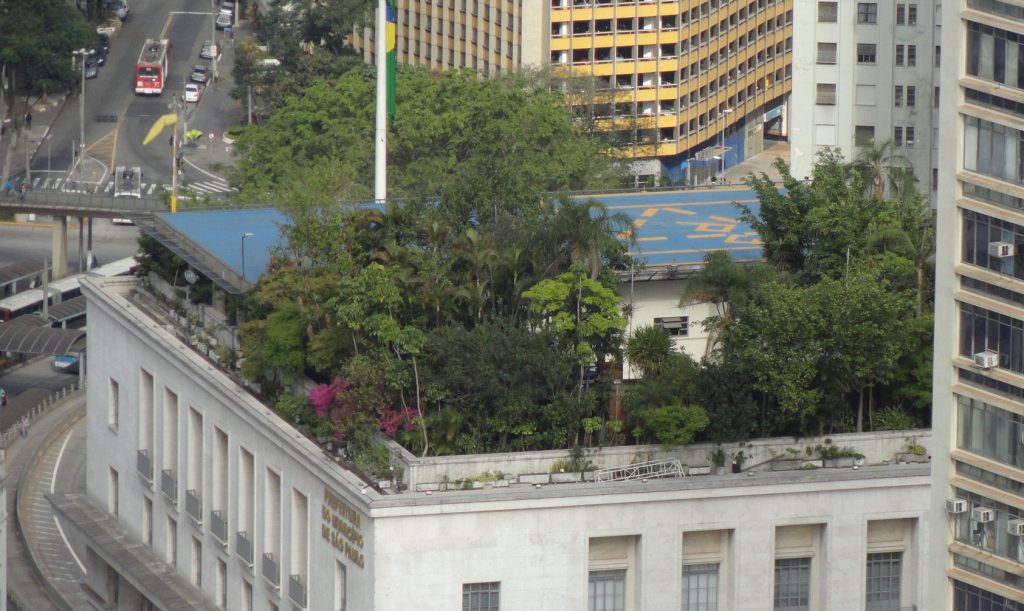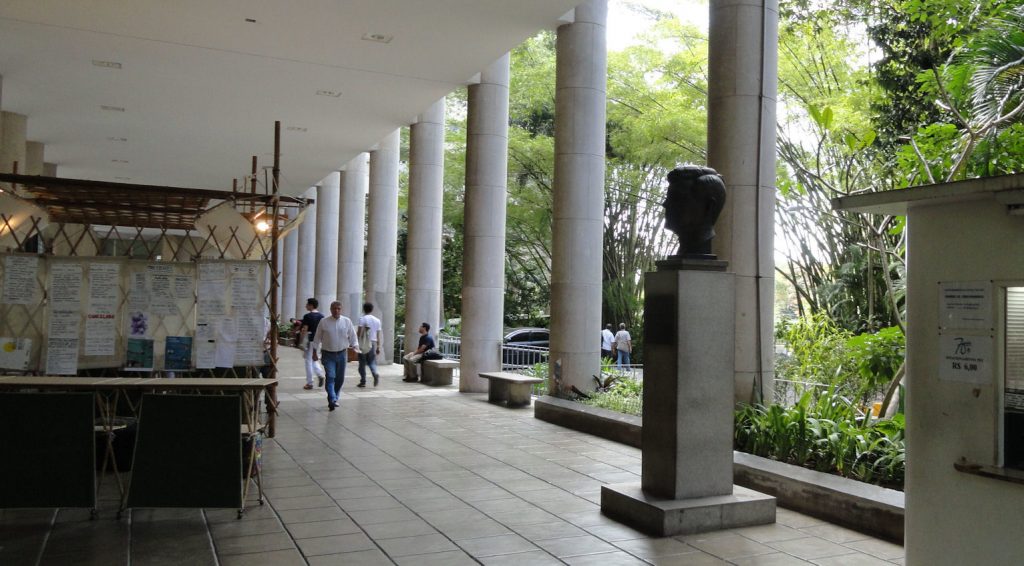
Brazil doesn’t have think tanks in the sense that we have them in the U.S. Brazilian scholars of politics and society are generally linked to universities, the media or political parties. But there are some that do what think tanks do. During my recent visits to São Paulo & Rio, I visited a few of the organizations that perform the think tank function.
Before going on, it might be a good idea to admit that the concept of a think tank is not well defined and in the U.S. as in Brazil they overlap & share personnel with universities and the media. Think tanks in the U.S. would include institutions such as the American Enterprise Institute (AEI), Brookings or RAND. RAND was set up to advise the military. Maybe the reason Brazil doesn’t have such a defined network of think tanks is because it doesn’t have a big military establishment that can consume and pay for expert advice. A second generation of think tanks emerged in the 1970s and 1980s, occupied chiefly by conservatives who felt that their ideas were viewed with little enthusiasm in traditional universities. Probably the most famous of these is the Heritage Foundation. In reaction to this, think tanks developed on the more liberal side.
Think tanks develop and elaborate ideas that are often adopted by government, firms and in society generally. They provide options an intellectual framework for policy. They also provide a home for thinkers and former officials when they are out of favor or power. Most successful think tanks have few actual employees but lots of associates and contributors.
Fundação Getulio Vargas (often just called FGV) comes close to being a think tank, although it remains primarily a school that grants degrees. The headquarters is in Rio and there is a branch in Brasilia. The FGV business school in São Paulo (Escola de Administração de Empresas de São Paulo -FGV – EAESP) was established in 1954 in cooperation with Michigan State University. The business school is responsible for a lot of the think tank sort of research that is published in Brazil.
25% of Brazil’s top business leaders are graduates of FGV-EAESP. And FGV-EAESP is extremely well connected with Brazil’s most successful businesses. Businesses sponsor programs, chairs and wings of their building. In return they get their names and often their products in front of Brazil’s future leading executives and some of the current ones, since in addition to traditional student FGV-EAESP is extensively involved in short term training and courses of executive MBAs.
FGV welcomes cooperation with American institutions and they have been seeing a lot more of their representatives in recent years. Universities and firms from Europe & the U.S. are starting to understand that they need a “Brazil strategy” and they are rushing to make up for lost time. What FGV wants are real partnerships, where both sides give and get. What they don’t want is the kind of one way street where an American or European institution sends down its professors and students for a semester of “Brazilian experience” w/o much contact with Brazilians. This, unfortunately, has been a pattern for many semester abroad programs. FGV doesn’t need this kind of thing. But they are interested in true partnerships and very interested in visits by notable U.S. experts who want to share their knowledge while learning about Brazil.
We talked a little about the lack of Brazil experts among Americans. Brazil is the biggest and most important country in South America, culturally, economically and temperamentally very different from its neighbors, yet it is too often treated as a sub-set of Spanish speaking Latin America. It is not sufficient to be an expert in Latin America. Speaking Spanish helps understanding Portuguese, but they are obviously not the same language and the overlap is more limited than many people think.
Another think tank experience visit was at CEBRI in Rio. This is a smaller operation. We talked about Brazil’s new place in the world and referred to the Council of Foreign Relations report about Brazil. Everybody agreed that the U.S. and Brazil should develop a more mature relationship of mutual respect and partnership. They liked the word partnership. They also pointed to the problem that Americans have of thinking of Brazil as a subset of Spanish America. Although most Brazilians can understand Spanish quite well, they don’t like to hear it from Americans. It is probably better to speak in English in many cases. The U.S. needs to develop a bigger body of experts that know Brazil, know Portuguese and know better the difference between Brazil and its neighbors.
I finished off my almost-think-tank tour with the Institute of International Relations at PUC. This is housed in the university (PUC) but participants have aspirations to be more. They have developed a “nucleus” to study the BRICS. I asked what “BRICS” really meant, since I could think of nothing that they BRICS had in common except a cool name thought up by an analyst at Goldman-Sachs a few years ago. They laughed and told me that Walter Russell Mead had asked similar questions. It seems to be an American thing. Nevertheless, there are few commonalities except that they were all developing countries and not Western Europe or the U.S. Being BRICS, if nothing else, provide a forum for the various countries to get together and being in the convenient group amplifies their voices. In the longer term, however, cooperation depends on common interests or at least common aspirations.
I am not sure that Brazil NEEDS think tanks along American lines, but I am reasonably certain that the country will develop them sooner rather than later. Think tanks fill a niche in the American, and increasingly the world. As I alluded above, in the U.S they provide independent, if often ideologically tinged, analysis. Their analysis is demanded in the marketplace of ideas. It will be useful to politicians and business people who can pay for or at least support the infrastructure needed to create the ideas.
My picture is from the board room at Banespa. It was not a think tank, but it was the symbol of consolidated and deliberate power.

































